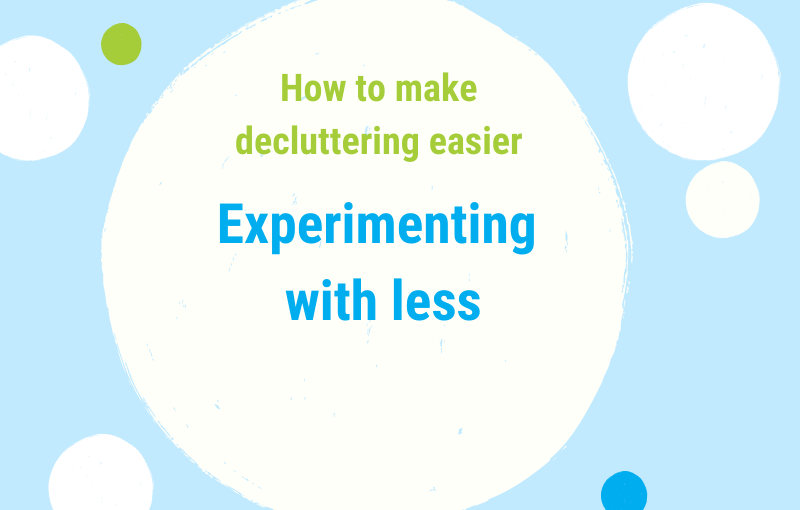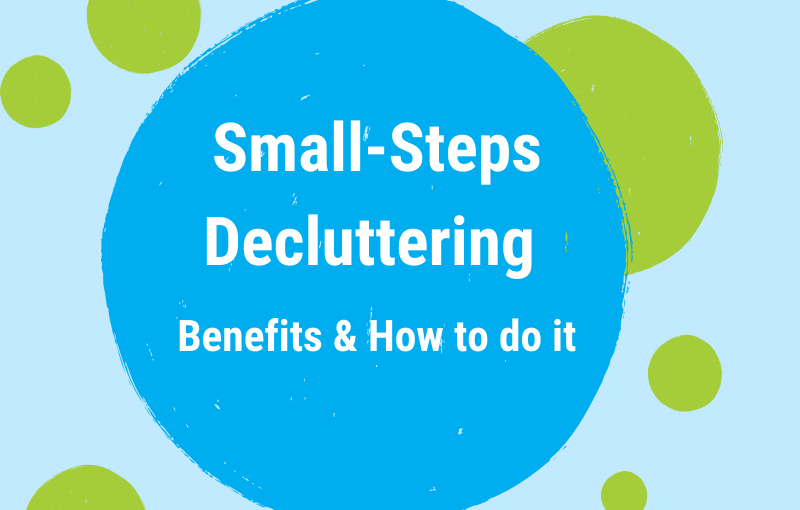The purpose of daily-life experimentation
Experimentation – “the action or process of trying out new ideas, methods, or activities” (online dictionary) – can be very helpful if we wish to learn more about ourselves.
Creating and conducting daily-life experiments is a playful way to develop greater self-awareness and to try out new ways of behaviour or testing the effects of new ways to solve problems.
Experimenting with less
‘Living-with-less’ experiments can be very helpful when we wish to declutter our stuff but struggle to make decisions about what to keep and what to let go.
Shopping bans – Experimenting with buying less
Shopping bans, for example, are a way of temporarily experimenting with drastically changed shopping behaviours.
Do you have any experience with shopping bans?
Some time ago I imposed a 3-months-shopping-ban on myself – no spending on books and clothes for 3 months.
This is what my shopping-ban exercise taught me:
-
- I appreciate more what I have and I use it with more care and attention if – for a while – nothing new is coming in.
- A lot of my buying behaviour is directed by spontaneous shopping decisions.
- I can break this circle of ‘automatic’ money spending if I postpone the decision for some days.
- Often, I no longer want to have the desired item and don’t buy it, without any regret.
- And if I decide to buy it after some days of consideration, I appreciate it more consciously and gratefully.
The ‘Project 333’ – Experimenting with having less clothes
An even greater challenge is experimenting with a combination of ‘no shopping’ and strict ‘using less’ rules.
Courtney Carver introduced the minimalist fashion challenge ‘Project 333’ in 2010.
Since then, thousands of people around the world have experimented with dressing with 33 items or less for 3 months.
Click here to learn more about the ‘Project 333’: https://bemorewithless.com/project-333/
These are the rules:
-
- Limit your closet to only 33 articles of clothing. All clothing, accessories, jewellery, outerwear and shoes count towards your number.
- Exceptions include your wedding ring, underwear, sleep wear, and workout clothing.
This is the process:
-
- First you get all your clothes, shoes, accessories and jewellery out.
- Then you sort everything into the following piles: Love, Maybe, Donate, Trash.
- Bag up the items to donate and throw out the trash.
- Finally choose the 33 items you want to restrict yourself to for the coming 3 months.
- Box the remaining items up and store them somewhere else in your home.
What do you think about this living-with-less experiment?
Do you think it’s an eccentric or even stupid idea to restrict ourselves in this way? Do you feel it’s impossible to dress with only 33 items? Or do you consider to give it a try?
I conducted this experiment once, and I found it so useful and ‘enlightening’ that I assume I will do it again at some time in the future.
And this is what my ‘Project 333’ taught me:
-
- During the first days of the experiment, I enjoyed having a reduced range of items to choose from. It made it much easier to get dressed in the morning.
- However, after some days I realised that I had included 3 t-shirts in my selection which I actually didn’t like much. Now I had to wear them. ☹
- I first missed my little weekend shopping trips a bit but then started to appreciate the extra time I gained for other things I like to do in my leisure time.
The ongoing effect of the experiment is that I learned to appreciate more what I have and I now use what I own with more care and gratitude.
I now know from experience that I need less than I thought in the past.
And I know better what I need and what I don’t need, what I like and what I don’t like. This also helps when I go shopping (which I do much less) – it now happens very rarely that I buy something I don’t need or like.
Yes, I think I’ll do this experiment again.
What about you?
I recommend you give it a try, especially if you are struggling with decluttering your wardrobe.


